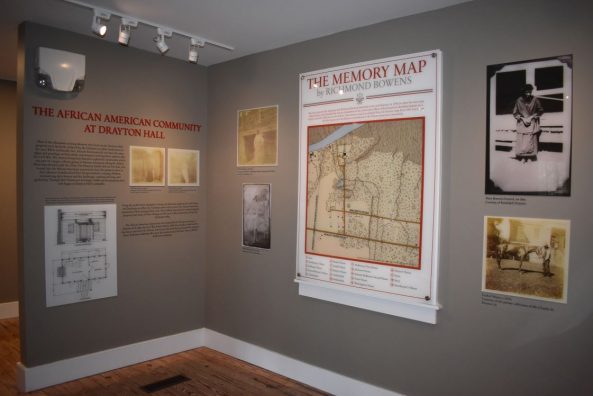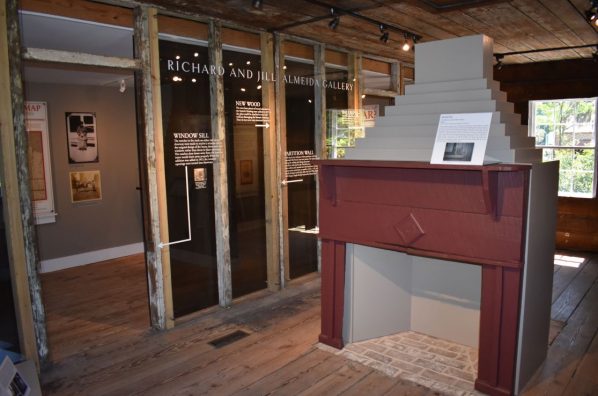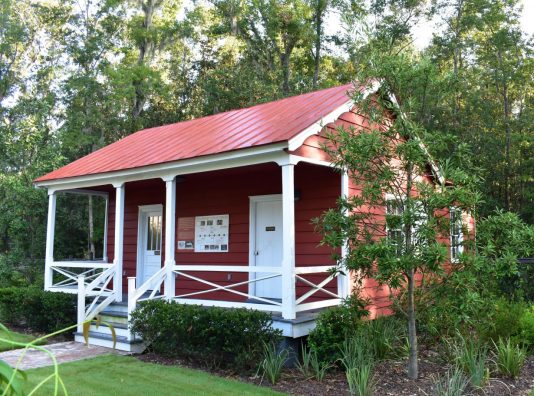Voted the Best Place to See by Condé Nast Traveler.

The exhibit in the Caretaker’s House at Drayton Hall won the Gold Award in the over $25,000 category of the Excellence in Exhibitions Competition at the South Eastern Museum Conference (SEMC) on October 23, 2019. The exhibit is housed in the Caretaker’s House, constructed around 1870 for a caretaker to live in while phosphate mining companies leased Drayton Hall after the Civil War. It focuses on the residents of the home, the phosphate mining and manufacturing industry, and the labor force that formed a thriving African American community that remained on the property until 1960. The exhibition uses the architectural fabric of the house to translate the stories of the people who lived there; while historic photographs, collections objects, and architectural features further illuminate a complex period of history seldom interpreted at plantation sites.

This exhibit has been years in the making. The Caretaker’s House had served as the gift shop at Drayton Hall since 1978, when the National Trust for Historic Preservation moved it from its original location next to the main house. In 2014, the staff began to intensively study the Caretaker’s House, examining the structure itself and the larger context of post-Civil War society in which it was built. Oral histories were integral to this work, especially those of Richmond Bowens, Jr. Mr. Bowens was born in 1908 at Drayton Hall and lived on the property until the 1940s. He lived in the Caretaker’s House in the 1920s with his mother, stepfather, and five siblings and stepsiblings. Mr. Bowens returned to Drayton Hall in the 1980s and worked as the site’s gatekeeper. The National Trust recorded oral histories with him during the last two decades of his life, which provide vital information about life on the property during the first half of the twentieth century. Aside from these oral histories, the staff studied census records, maps, historic photographs, and artifacts to piece together the history of Drayton Hall from 1866 to 1960. Most importantly, we examined the Caretaker’s House itself to find clues about when it was built, who lived in it, how it changed over time, and what the interior looked like.

In 2015, we installed a temporary exhibit in the front room of the house. It included a timeline of the history of the Caretaker’s House, panels about the phosphate mining industry, Mr. Bowens’ rocking chair and walking stick, and a timeline of the history of Drayton Hall. Each of these elements served as templates for panels we would later include in the exhibit in 2018.
In 2017, the Drayton Hall Preservation Trust commenced construction of the Sally Reahard Visitor Center. For the first time, Drayton Hall would have a purpose-built gift shop, freeing up the Caretaker’s House for interpretation for the first time since the site opened in 1974. We endeavored to install a permanent exhibit in the house that was compatible with the historic fabric of the structure.
As part of a grant from the Institute of Museum and Library Services (IMLS), the curatorial staff consulted three leading scholars of African American history throughout the planning stages of the exhibit: Dr. Bernard Powers, Dr. Theresa Singleton, and Dr. Millicent Brown. They evaluated our current interpretation, determined themes for the exhibits in the Caretaker’s House as well as the gallery, and helped develop the appropriate language of the text panels. The curators also worked with descendants of the African American community at Drayton Hall to write panel copy and ensure the personal stories were told respectfully and accurately.

The exhibition provides space for visitors to bridge the gap between the antebellum vision of Drayton Hall with the historic site they chose to visit in the 21st century. Walking through a house that caretakers lived in until 1960 makes the stories more relatable and tangible. This exhibition recognizes the African American community responsible for the preservation of Drayton Hall. It illustrates that the site was not stagnant, but was home to a thriving population that kept the property alive in the wake of the Civil War.